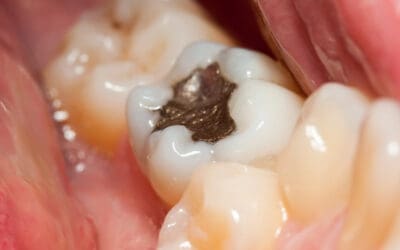Are you curious about the differences between dental amalgam vs composite fillings and their respective pros and cons? Dental amalgam, known for its durability and cost-effectiveness, contrasts with composite fillings, which offer aesthetic appeal and a more natural look. Each option has its own set of advantages and disadvantages, making the choice dependent on individual needs and preferences.
Dental Amalgam vs Composite Fillings
When considering dental amalgam vs composite fillings, understanding the material composition differences is crucial. Dental amalgam is a mixture of metals, primarily composed of liquid mercury and a powdered alloy consisting of silver, tin, and copper. This combination creates a durable and long-lasting filling material that has been used in dentistry for over a century. On the other hand, composite fillings are made from a blend of plastic resins and fine glass particles. This composition allows for a more aesthetically pleasing result, as the material can be closely matched to the natural color of teeth.
The choice between dental amalgam vs composite fillings often depends on various factors, including the location of the cavity and patient preferences. Amalgam fillings are known for their strength and durability, making them suitable for areas that endure heavy chewing forces. In contrast, composite fillings offer a more natural appearance and are often preferred for visible areas of the mouth. For more insights into different dental treatments, you might find the article on Dental Sealants vs Fillings: Which is Right for You? helpful.
Durability and Longevity
When considering dental amalgam vs composite fillings, durability and longevity are crucial factors. Dental amalgam fillings are known for their exceptional strength and durability, often lasting 10 to 15 years or more. This makes them a popular choice for areas of the mouth that endure significant chewing pressure. The metal components in amalgam fillings contribute to their resilience, allowing them to withstand the forces of daily use without significant wear.
On the other hand, composite fillings, while aesthetically pleasing, may not offer the same level of durability as amalgam. They typically last around 5 to 7 years, although advancements in dental technology have improved their longevity. Composite fillings are more prone to wear and may require replacement sooner than their amalgam counterparts. For those interested in learning more about options for dental fillings, you can explore Affordable Dental Fillings in Arlington.
Aesthetic Considerations
When comparing dental amalgam vs composite fillings, aesthetics play a significant role in decision-making. Dental amalgam, known for its durability, often appears as a silver or metallic color, which can be noticeable when used in visible areas of the mouth. In contrast, composite fillings are designed to blend seamlessly with the natural color of teeth, offering a more discreet and visually appealing option. This difference in appearance can influence a patient’s choice, especially when considering treatments for front teeth or other areas that are easily seen when smiling or speaking. The aesthetic appeal of composite fillings often makes them a preferred choice for those prioritizing a natural look.
Cost Comparison
When considering dental amalgam vs composite fillings, cost is a significant factor for many patients. Dental amalgam fillings are generally more affordable due to the materials used and the straightforward application process. In contrast, composite fillings tend to be more expensive because they require more time and skill to apply, as well as the use of advanced materials that can be color-matched to the natural tooth. The choice between these two options often depends on budget considerations and personal preferences regarding aesthetics and durability. For those seeking further information on dental care options, Lighthouse Dental, an Arlington Dentist, provides a range of resources to help patients make informed decisions.
Procedure Time and Complexity
When considering dental amalgam vs composite fillings, understanding the procedure time and complexity is crucial. Dental amalgam fillings are typically quicker to place due to their straightforward application process, which involves packing the amalgam material into the cavity and allowing it to harden. This simplicity often results in shorter dental visits. On the other hand, composite fillings require a more intricate procedure. The tooth must be kept dry and clean, and the composite material is applied in layers, each of which is cured with a special light. This meticulous process can extend the duration of the appointment, as it demands precision to ensure a proper bond and natural appearance. The complexity of composite fillings may also necessitate more skill from the dental professional, contributing to the overall time spent in the chair.
Health and Safety Concerns
When considering dental amalgam vs composite fillings, it’s important to understand the health and safety concerns associated with each option. Dental amalgam, which contains mercury, has been scrutinized for potential health risks, although numerous studies have shown it to be safe for most patients. On the other hand, composite fillings are made from a mixture of plastic and fine glass particles, which do not contain mercury. However, some individuals may have sensitivities or allergies to the materials used in composite fillings. Both types of fillings have been deemed safe by dental health organizations, but individual reactions can vary, making it essential to discuss any concerns with a dental professional.
Environmental Impact
When considering dental amalgam vs composite fillings, it’s important to understand their environmental impact. Dental amalgam contains mercury, a substance that can pose environmental risks if not disposed of properly. Mercury can enter the water supply and affect aquatic life, leading to broader ecological concerns. On the other hand, composite fillings are primarily made from resin-based materials, which generally have a lower environmental footprint during disposal. However, the production process for composites may involve chemicals that could impact the environment. Understanding these factors is crucial when evaluating the broader implications of dental amalgam vs composite fillings.
Sensitivity and Comfort
When considering dental amalgam vs composite fillings, sensitivity and comfort are important factors to weigh. Dental amalgam fillings, made from a mixture of metals, can sometimes lead to increased sensitivity to temperature changes, especially in the days following the procedure. This is due to the metal’s ability to conduct heat and cold more effectively. On the other hand, composite fillings, which are made from a resin-based material, tend to offer a more comfortable experience for many patients. They are less likely to cause sensitivity because they do not conduct temperature changes as readily as metal. The choice between dental amalgam vs composite fillings can significantly impact a patient’s comfort level, making it a crucial consideration in dental care decisions.
Maintenance and Care Requirements
When considering dental amalgam vs composite fillings, understanding the maintenance and care requirements for each can be crucial for long-term oral health. Dental amalgam fillings are known for their durability and typically require less maintenance over time, as they are resistant to wear and tear. However, they may not match the natural tooth color, which can be a consideration for some individuals. On the other hand, composite fillings offer a more aesthetically pleasing appearance by blending seamlessly with natural teeth, but they may require more frequent check-ups and potential touch-ups to maintain their appearance and integrity. Both types of fillings necessitate regular dental visits to ensure they remain in good condition and continue to protect the tooth effectively.
Conclusion
In the debate of dental amalgam vs composite fillings, understanding the pros and cons of each can help you make informed decisions about your dental health; for more information, call 703-337-3994 or read reviews on Google Maps.






